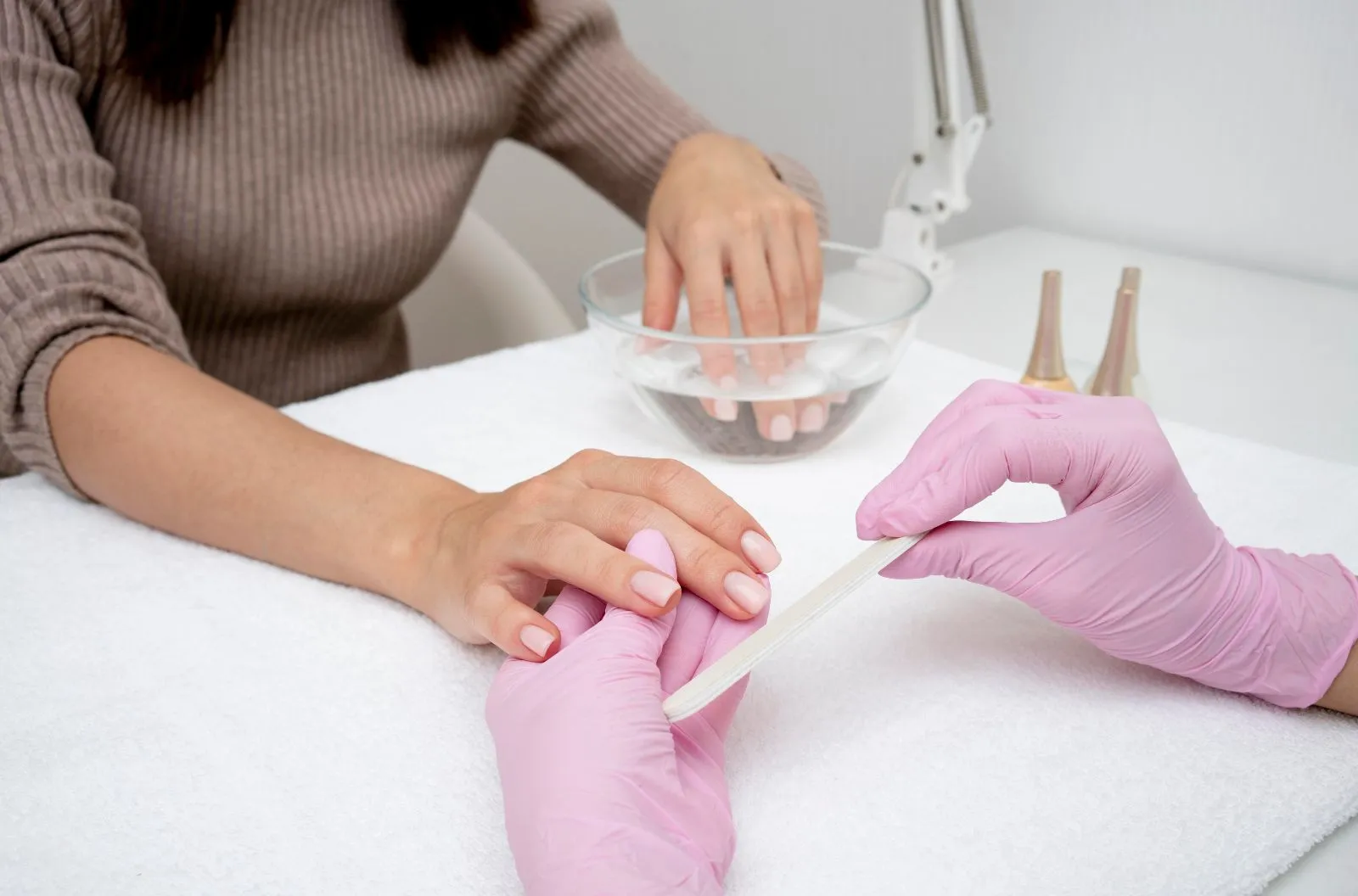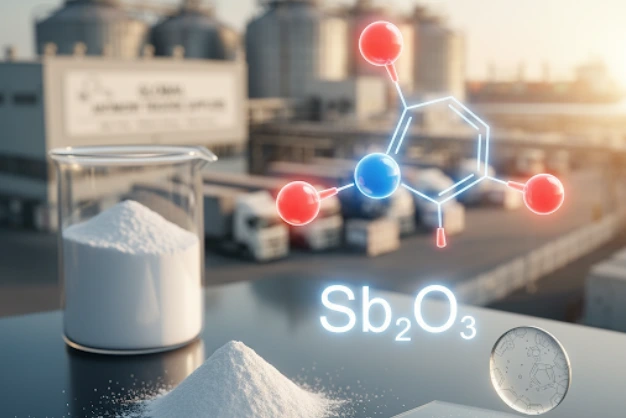TABLE OF CONTENTS
TABLE OF CONTENTS
When it comes to nail enhancements, two popular options often come to mind: acrylic nails and dip powder nails. Both methods offer unique benefits and drawbacks, making the choice between them a matter of personal preference and specific needs. This article will provide a comprehensive comparison of acrylics and dip powder, helping you make an informed decision.
Definition and Composition: Acrylic vs. Dip Powder
Acrylic Nails
Acrylic nails are a combination of a liquid monomer and a powder polymer that, when mixed, form a hard protective layer over the natural nail. This mixture is applied to the nail, shaped, and then allowed to harden naturally or under UV light. Acrylics are known for their durability and strength, making them a popular choice for those who need long-lasting nails.
Dip Powder Nails
Dip powder nails involve a process where the natural nail is coated with a bonding agent, then dipped into a colored powder. This process is repeated until the desired thickness and opacity are achieved. Finally, a clear sealant is applied to protect the nails and give them a glossy finish. Dip powder nails are praised for their ease of application and the fact that they don’t require UV light to cure.
Benefits: Acrylic vs. Dip Powder
Benefits of Acrylic Nails
Durability: Acrylic nails are highly durable and resistant to wear and tear, making them ideal for those who use their hands frequently.
Customizability: Acrylics can be easily shaped and customized to any length and design, allowing for creative nail art.
Repairability: If an acrylic nail breaks, it can be repaired without needing to redo the entire nail.
Benefits of Dip Powder Nails
Less Odor: Unlike acrylics, dip powder nails have little to no odor during application, making the process more pleasant.
Healthier for Natural Nails: Dip powder is less likely to cause damage to the natural nails compared to acrylics, especially when removed correctly.
Quick Application: The dip powder process is generally faster and less complex than applying acrylics, saving time for both the technician and the client.
Drawbacks: Acrylic vs. Dip Powder
Drawbacks of Acrylic Nails
Strong Odor: The chemicals used in acrylic nails can produce a strong odor that some may find unpleasant.
Potential Damage: Improper application or removal of acrylics can cause significant damage to the natural nails.
Maintenance: Acrylic nails require regular fills and maintenance to keep them looking their best.
Drawbacks of Dip Powder Nails
Thickness: Dip powder nails can sometimes appear thicker than acrylics, which may not be desirable for some.
Less Flexible Design: While there are many color options, dip powders may offer less flexibility in terms of intricate nail art compared to acrylics.
Comparison: Acrylics vs. Dip Powder
Durability
Which Lasts Longer?
Both acrylics and dip powder nails are known for their durability. However, acrylics tend to last slightly longer, especially for those with active lifestyles.
Resistance to Chipping and Breaking
Acrylic nails are generally more resistant to chipping and breaking due to their hardness. Dip powder nails, while durable, may be more prone to cracking under pressure.
Application Time
Time Taken for Each Method
The application process for acrylic nails is more time-consuming than for dip powder nails. Acrylics require meticulous shaping and filing, while dip powder nails involve a quicker dipping and sealing process.
Ease of Application
Dip powder nails are easier and faster to apply, making them a convenient choice for those with limited time.
Aesthetics
Look and Feel
Acrylic nails can be sculpted to achieve a variety of shapes and lengths, offering a polished and professional look. Dip powder nails, while also aesthetically pleasing, may appear thicker.
Variety in Colors and Designs
Both methods offer a wide range of colors and designs. However, acrylics allow for more intricate nail art and customization.
Health Impact
Effects on Natural Nails
Both acrylics and dip powder can potentially damage natural nails if not applied or removed correctly. However, dip powder is generally considered to be less damaging.
Chemical Exposure
Acrylics involve the use of more harsh chemicals compared to dip powder, which may cause concerns for those sensitive to chemical exposure.
Cost
Initial Cost
Acrylic nails typically have a higher initial cost due to the complexity of the application process.
Maintenance Cost
Both methods require regular maintenance. However, acrylics may incur higher costs due to more frequent fills and repairs.
Maintenance and Removal: Acrylic vs. Dip Powder
How to Maintain Acrylic Nails
To maintain acrylic nails, regular fills are necessary every 2-3 weeks. It’s important to keep the nails clean and avoid excessive pressure that could cause breakage.
How to Maintain Dip Powder Nails
Dip powder nails also require regular maintenance, although the process is generally simpler. Keeping the nails moisturized and avoiding harsh chemicals will help prolong their life.
Safe Removal Processes for Both
Removing acrylic nails involves soaking in acetone and carefully peeling off the acrylic. Dip powder nails can be removed by soaking in acetone as well, but the process is usually quicker. It’s crucial to follow proper removal techniques to avoid damaging the natural nails.
Tips to Minimize Damage to Natural Nails
Suitability for Different Lifestyles: Acrylic vs. Dip Powder
Which Method Suits Active Lifestyles?
Acrylic nails are better suited for active lifestyles due to their superior durability. However, dip powder nails are a good alternative for those looking for a healthier option for their natural nails.
Recommendations Based on Nail Health
For those with weaker or more brittle natural nails, dip powder is often recommended as it is gentler on the nails. Acrylics may be more suitable for those looking for longer-lasting and highly customizable designs.
Personal Preferences and Style Considerations
Ultimately, the choice between acrylics and dip powder comes down to personal preference. Consider your lifestyle, nail health, and aesthetic preferences when making your decision.
Expert Opinions and User Experiences
Quotes from Nail Technicians
“Nail enhancements should not damage your natural nails if applied and removed correctly. It’s important to choose a method that fits your lifestyle and nail health.” – Jane Doe, Professional Nail Technician
Common Issues and Solutions
Issue: Lifting and chipping.
Solution: Ensure proper application and regular maintenance.
Issue: Thick appearance of dip powder.
Solution: Opt for thinner layers during application.
Conclusion
Summary of Key Points
Acrylic nails and dip powder nails both offer unique benefits and drawbacks. Acrylics are durable and customizable but require more maintenance and can cause more damage. Dip powder nails are healthier for natural nails and quicker to apply but may not last as long and can appear thicker.
Final Recommendations Based on Different Needs
Consider your lifestyle, nail health, and personal preferences when choosing between acrylics and dip powder. Both methods can provide beautiful, long-lasting nails when applied and maintained properly.
For the best results, consult with a professional nail technician. They can provide personalized advice and ensure that your nail enhancements are applied and removed safely.
FAQs
Common Questions About Acrylic Nails
How long do acrylic nails last?
Acrylic nails can last 2-3 weeks before needing a fill.
Can acrylic nails damage natural nails?
Yes, if not applied or removed correctly.
Common Questions About Dip Powder Nails
How long do dip powder nails last?
Dip powder nails can last 3-4 weeks with proper care.
Are dip powder nails healthier for natural nails?
Generally, yes. They are less likely to cause damage compared to acrylics.
Contact Us
Questions or looking for a quote?





